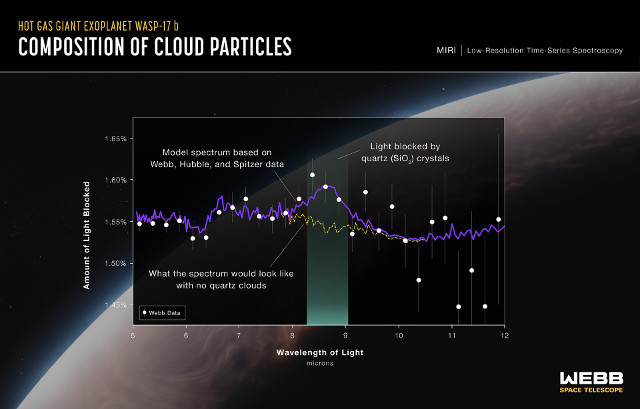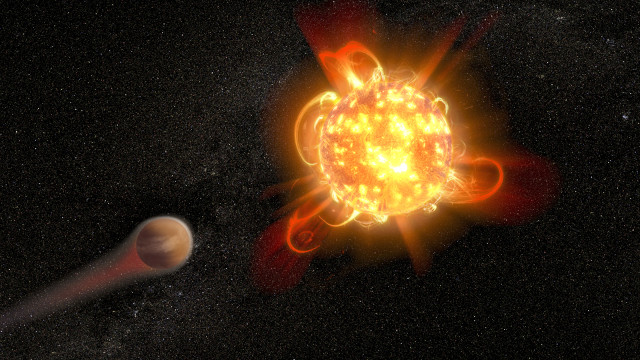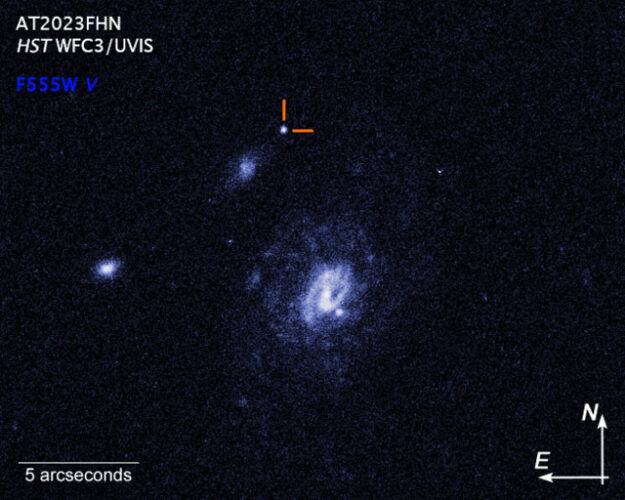
Quartz nanocrystals in the atmosphere of the exoplanet WASP-17 b
An article published in “The Astrophysical Journal Letters” reports a study of the exoplanet WASP-17 b that includes the detection of quartz in this hot Jupiter’s atmosphere. A team of researchers used the James Webb Space Telescope to detect the subtle effects of quartz crystals, nanoparticles dispersed in the very hot atmosphere of WASP-17 b, which received the official name Ditsö̀ in early 2020.





